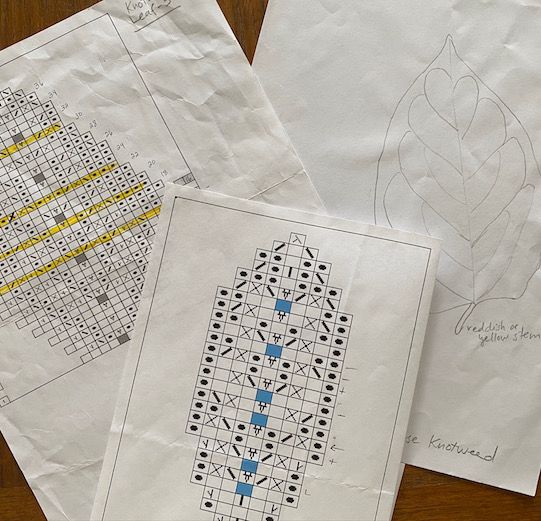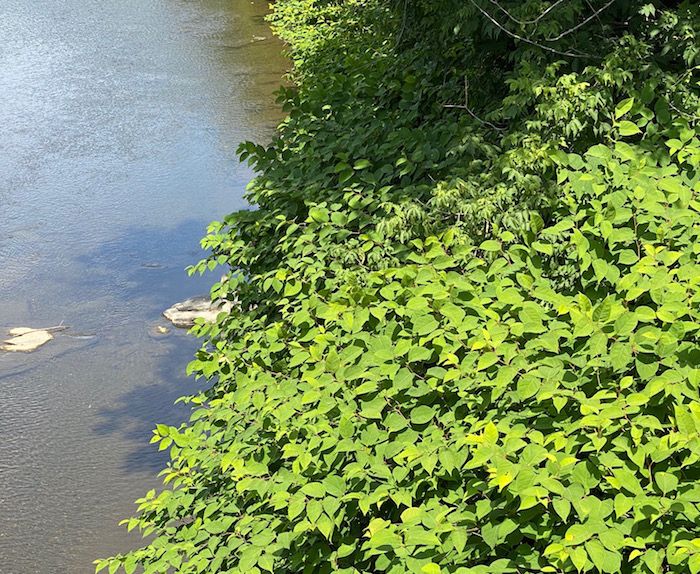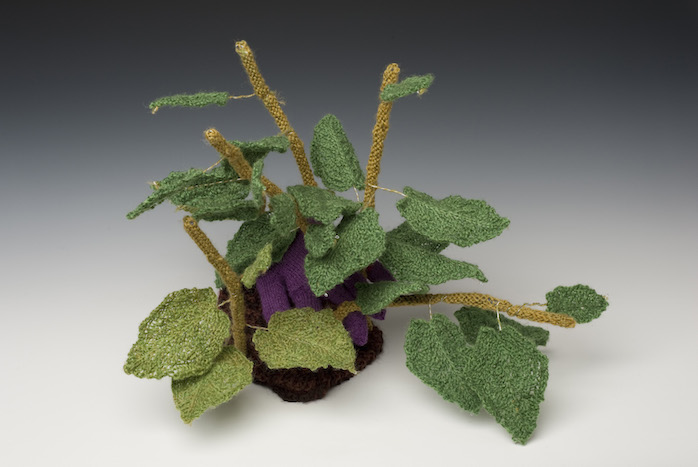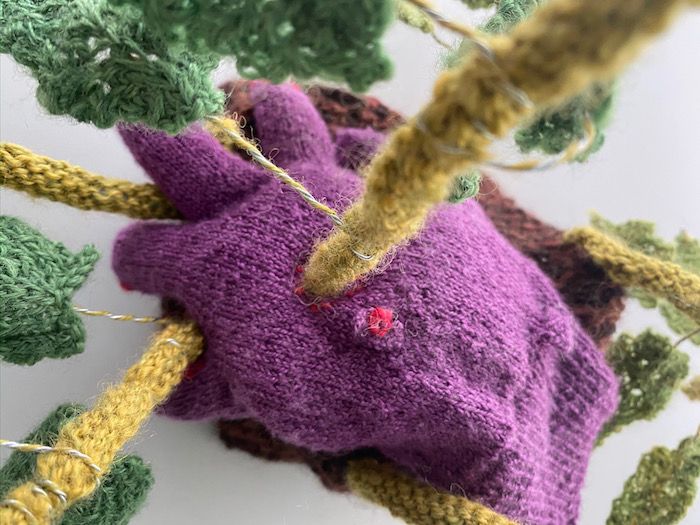Have you ever been attracted to something beautiful and dangerous? That was the case with the nineteenth-century gardeners who brought Japanese Knotweed to Europe and the United States. They were drawn in by the elegant shape of the large leaves and the graceful spray of white flowers. Plus this hardy plant grew easily. Too easily. That’s where the danger lay.
A sculpture to teach about invasive plants
I chose to knit a sculpture of Japanese Knotweed because it’s a great example of the impact of human decisions on the natural environment. This plant is one of the world’s most invasive species. Its bamboo-like stems grow up to nine feet tall and form dense thickets. The problem for the environment is that it chokes out native plants, destroying the natural habitat of many birds and animals. It destroys houses too, creeping into building foundations.
I captured the beauty of Japanese Knotweed with delicate lace knitting. The leaves are broad and vaguely heart shaped. Their size allows room to draw intricate vein lines with lace stitches.

To convey the dangerous character of the plant I placed a knitted hand stained with bright red yarn blood at the base of the sculpture. The plant’s stalks pierce the gardener’s hand. This is hardly an exaggeration, since Japanese Knotweed’s roots have been known to tunnel beneath highways and come up through masonry and asphalt.
Detail of Knotweed: Not Safe, ©Eve Jacobs-Carnahan, 2014, $800.
Knotweed is so difficult to eradicate
In Vermont, I’ve seen Japanese Knotweed spread along many of the riverside paths where I bicycle. Tropical Storm Irene eroded riverbanks and spread the plant in August 2011 when it was blooming and forming seeds. Many bike paths are flanked by dense walls of knotweed. They look like an invading army, thousands strong, marching closer and closer.

Dense thicket of Japanese Knotweed along the banks of the Winooski River.
The first step in eradicating invasive species is to identify the plants. Only then you can start to contain and control them. It may not be possible to fully eradicate this vicious plant, but it’s worth trying to slow its spread. In Britain it has caused immense destruction, as this article in Slate magazine explains.
The Slate reporter describes teams of volunteers who pulled up knotweed along the Bronx River in New York City. They tried to weaken it by cutting it back summer after summer before it flowers, and then applied herbicide. Organizations like the New York State Invasive Species Clearinghouse try to raise awareness and give guidance.
You can explore this and other knitted sculptures of plants in my website plant gallery here.


Thoroughly enjoyed this blog. Going to go back when I have time to read more on the plant life forms you featured in this timely summer blog.
It was helpful to read the details about the knotweed piece as I did not see the “hand” until you mentioned it.
My website features some of the performance outfits I have made in the last 25 years with my business. But it is not reflecting what I am doing right now which is making masks for humanity and collecting quilt piece remnants from some of the donated cottons I have gotten and purchased for masks. Also I made an applique cloth baby book which was really fun. With no skating venues happening my work in spandex is on hold! My last artwork was colored pencil drawings of circle wreaths of shells. not framed yet.
Thanks for keeping me in the loop on your fiber art!!!
I love to see and read the info, Eve.!
MELINDE
Melinde, thanks for your comments. I wouldn’t be surprised if you have knotweed near you. Thank you for making masks for humanity. It’s important work. It’s so good to have makers with sewing skills helping others in Vermont and around the country.